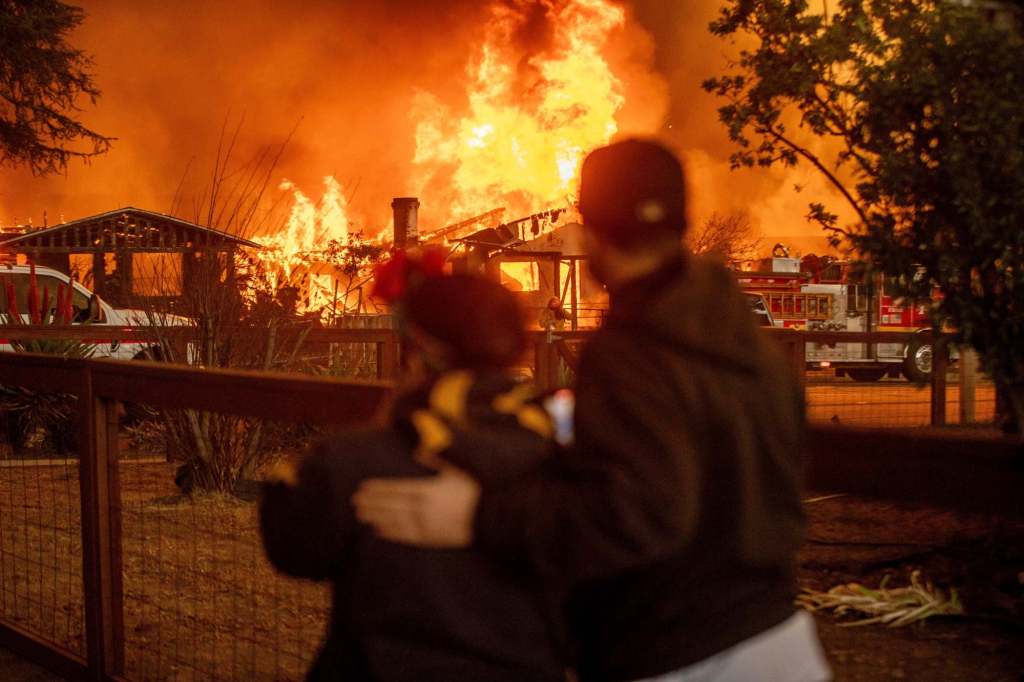
This year, we got a harsh reminder of how vulnerable our cities really are. The California wildfires have exposed the flaws in our environmental, prevention, and urban policies, showing how far we are from creating sustainable communities in the Golden State.
The devastating effects of climate change, environmental mismanagement, and government neglect are still felt today. While the immediate threat may have passed, the aftermath persists. Communities are rebuilding, ecosystems are recovering, and we must rethink our approach to prevent future disasters. This is not something we can simply move past—it’s time for lasting change to protect both people and the environment.
The fires in Southern California, though no longer trending on social media, have permanently impacted thousands, causing deaths and material loss and exposing policies that separate the environment from human life—socially, economically, and politically.
Wildfires are a serious and recurring issue in California, with three main causes behind the Los Angeles tragedy:
-
Climate Conditions: Dry summers, strong winds, and rising temperatures, driven by climate change, create highly flammable environments, extending wildfire seasons and intensifying fires.
-
Poor Forest Management: Inadequate fire suppression and lack of controlled burns have led to overgrown forests, increasing fuel for wildfires.
-
Infrastructure: Faulty electrical equipment, like downed power lines, and poorly planned urban development in wildfire zones raise the risk to communities.
A combination of prolonged drought, dry conditions, and fierce Santa Ana winds created the perfect storm for catastrophic wildfires. Low rainfall and a drought-affected landscape set the stage for extreme fire conditions. However, climate alone wasn’t the cause of the destruction. Poor land management and inadequate infrastructure significantly amplified the crisis.
Decades of neglect, including overgrown vegetation, lack of controlled burns, and invasive species, left vast areas vulnerable to intense fires. Urban sprawl into high-risk wildfire zones increased exposure, while poorly maintained firebreaks and outdated emergency systems hindered efforts to control the fires and protect communities. As pointed out by National Geographic, insufficient investment in fire-resistant infrastructure and a lack of proactive fire prevention strategies have left many communities exposed and ill-prepared to handle such extreme wildfire events.
The Palisades Fire alone consumed over 20,000 acres, destroyed more than 6,700 structures, and damaged 904 others. This disaster displaced thousands of families, leaving both affluent and less privileged communities equally vulnerable to the destructive power of the flames.
California’s environmental preservation policies, aimed at protecting ecosystems, have inadvertently disrupted the natural fire cycle, especially in overgrown forests. Poorly managed parks and public lands have become “tinderboxes,” reducing the cultural, social, and economic value of these areas and posing significant risks to the environment and nearby communities. As emphasized in recent reports, decades of mismanagement have led to “choked” forests, and experts argue that active forest management is essential to mitigate the growing wildfire risk.
Active forest management makes forests healthier and less prone to accidental fires. This includes controlled burns to clear excess brush and dead trees, thinning overcrowded areas, and removing invasive plants. These practices reduce flammable material, preventing fast-spreading wildfires. Controlled burns, for example, clear old plants, allowing fire-resistant vegetation to grow. Instead of just responding to fires, active management helps prevent them from becoming dangerous.
Additionally, California’s electrical infrastructure shows clear neglect. In areas like Altadena, where the Eaton Fire started, downed power lines were a major cause. Despite high taxes, there’s inadequate infrastructure to prevent such incidents, putting public safety and communities at risk. The lack of investment in reliable power infrastructure, especially in fire-prone areas, has left residents vulnerable to disasters that could otherwise be mitigated, as reported in NPR.
Water management has also played a critical role in hindering the ability to fight wildfires in California. In some regions, including Pacific Palisades, malfunctioning hydrants and inadequate water pressure have severely delayed firefighting efforts. In these cases, firefighters found themselves unable to access enough water to suppress the flames, exacerbating the spread of wildfires. This exposes the state’s vulnerability in managing resources during emergencies. Without a reliable water supply, fire crews struggle to control fires, putting lives, property, and communities at greater risk.
Given California’s wildfire history, it’s crucial to focus on forest management to prevent future disasters. Policies that disconnect us from environmental responsibility are destined to fail. If we don’t care for our home, we’ll eventually face the consequences of never having maintained it.
Daniel Ramírez is an environmental sciences and project management professional who is active in environmental political movements. He has served as a TEDx speaker on leadership and civic engagement and is an ambassador for the American Conservation Coalition in the San Francisco Bay Area.
Originally Published:



